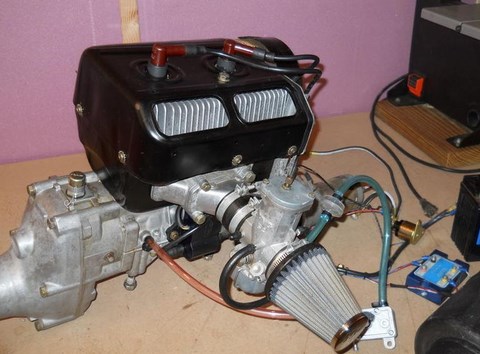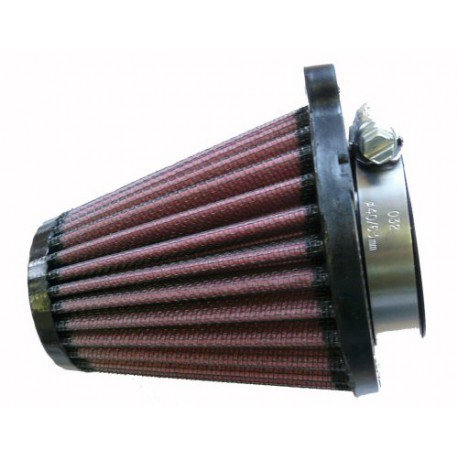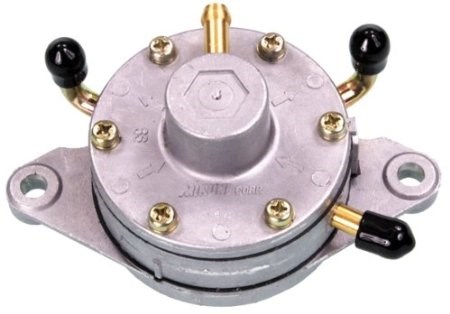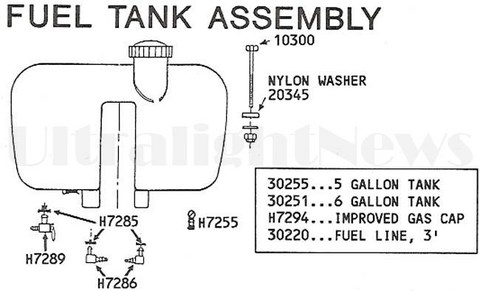Ultralight aircraft fuel system problems
Ultralight Aircraft Propulsion System :
The propulsion system consists of - Fuel system, exhaust system, reduction drive, engine, and prop.
Ultralight Aircraft Fuel system :
Many ultralights come up for resale because the owner has medical, financial or family problems (or has simply lost interest.) The decision to sell usually does not come easily. This can mean that the aircraft has been used sparingly, and has been tied down, out in the open at a flying field, at the mercy of the elements, or hangared for long periods of time.
If the reason for the sale is financial, aircraft maintenance should be of prime concern!
In many cases the aircraft is left with fuel in the gas tank, and carburetor. Pull the cap off the gas tank, or the bowl of the carburetor you will know immediately whether the plane has been in storage. The smell will knock you off your feet! Adding fuel, or starting the engine without first draining and cleaning the complete fuel system can severely damage the engine, your body or the aircraft, when the engine quits from a clogged fuel system during takeoff!
Consider the cost in time, and parts necessary to bring the fuel system back to 100%, when buying an ultralight.
Recommended replacement parts:
The fuel shut off valve, fuel filter, fuel line , primer lines, rubber intake manifold(s) , primer bulb, carburetor bowl gasket(s) main jet and idler jet , and gas tank grommets . With storage, gas and UV deterioration will make it necessary for most if not all of these to be replaced or cleaned.
If the engine has a sponge air filter, replace it with a K & N air filter.
Many older ultralights came equipped with 503 Rotax or Hirth engines using a single Mikuni fuel pump. Both single and dual carb 503 Rotax/Hirth engines should use the dual Mikuni fuel pump .
the fuel system is the live blood of the aircraft
The pump should be; rubber mounted, a maximum of 12 inches, from the vacuum source on the engine, away from heat, and with the vent on the pump, (found in the middle of the vacuum elbow) facing down.
The pump should be; rubber mounted, a maximum of 12 inches, from the vacuum source on the engine, away from heat, and with the vent on the pump, (found in the middle of the vacuum elbow) facing down.
Another common problem on aircraft equipped with either the Mikuni or Bing carburetor was wear in the needle valve and or retaining clip. This wear would cause the needle to fall down into the carburetor resulting in the engine dropping back to an idle .
Approximate prices:
Fuel shut off $ 7. - $ 10. (each)
Fuel filter $ 3. - $ 5.
Carb bowl gasket $ 5.
Squeeze Bulb primer $ 6.
Gas tank grommets $ 1.
Dual pump $ 29.50 - $ 80.
Air filters $ 20. - $ 35.
Primer line $ 1. per ft
Fuel line $ 25. for 25 feet
Impulse line $ 1. per ft.
Jet needle $ 6.00
Jet needle clip $ 3.00
Main jet $ 4.50
Idler jet $ 14.50 (each)
Ultralight Aircraft Engine Failure and What Can Happen:
On August 28th, 2005 I had an engine failure during takeoff in my Quicksilver MX Ultralight. The cause of the engine failure is unknown, but it was NOT because I ran out of gas, as some people have conjectured. The fuel tank was full, and the fuel valve was on. The engine had been running for more than 10 minutes before I finally took off. If the fuel valve had been off the carburetor bowl would have run out of fuel long before takeoff.
I made the mistake of turning left immediately after takeoff. Some friends of mine were at the airport and I was going to fly back over them to show off. If I had taken off straight ahead I could have glided down onto the runway.
I inserted a timer into the video so you can see how much time elapses between the engine failure and when I hit the trees. It's 4.8 seconds. Some people have been critical of me for pulling back on the stick causing the plane to stall. If you watch the video closely you'll see that I don't pull back on the stick until 2 seconds after the engine failure. I initially push the stick forward. I only pull back when the trees are rushing up at me. I was going to hit the trees no matter what.
4.8 seconds after the engine failure I hit the trees. From that point forward I'm just along for the ride. I hit the ground at the 7 second mark. The camera cuts out for an instant when the plane hit the ground, but it came back on almost immediately. The video goes on for about another 30 minutes, during which time you can hear the paramedics working on me, and you can see them through the grass. I cut that part out because it's pretty boring.
The engine was a 2-stroke Cuyuna 430.
Sorry for all of the copyright BS, but I uploaded this video once before and the copyright info was stripped off and re-uploaded to numerous websites. I'm trying to prevent that from happening again. If you're interested in licensing this video for a TV show, please contact me at the email address shown in the video.




